Soldiers and civilians who lived and worked in St. Augustine several hundred years ago likely encountered pirates as they went about their daily lives. The late 1600s and early 1700s were the golden age of piracy, and pirates often visited the city to sack it or unload their loot.
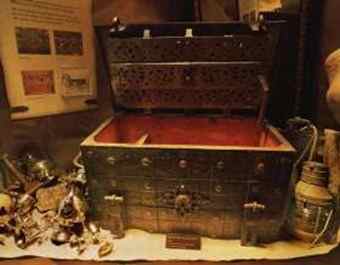 This week, workers unearthed artifacts left behind by soldiers and early residents of the city while digging into the grounds of a new pirate museum under construction across the street from the Castillo de San Marcos fort. Their numerous finds, which include a compass, pieces of pottery, knee buckles and part of a sword hanger, will help bring a long-gone and colorful era back to life.
This week, workers unearthed artifacts left behind by soldiers and early residents of the city while digging into the grounds of a new pirate museum under construction across the street from the Castillo de San Marcos fort. Their numerous finds, which include a compass, pieces of pottery, knee buckles and part of a sword hanger, will help bring a long-gone and colorful era back to life.
They will be exhibited in the St. Augustine Pirate and Treasure Museum at 12 S. Castillo Drive, slated to open Friday.
Beaches residents seeking fun on nearby holiday season excursions can learn a lot about pirates who once sailed into the historic city with a short scenic drive down Florida A1A. And thanks to the unearthed artifacts, they can learn about the lives of people who lived among them.
It's even "a possibility" some of the artifacts came from pirates themselves, said city archeologist Carl Halbirt. They could have worn the types of knee buckles and coat buttons found on the museum grounds, he said.
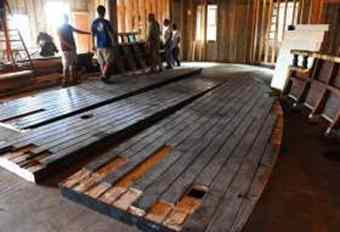 In any case, "the artifacts will add to the historical significance of St. Augustine," he said. When people can actually see items used hundreds of years ago, "they're just amazed."
In any case, "the artifacts will add to the historical significance of St. Augustine," he said. When people can actually see items used hundreds of years ago, "they're just amazed."
The museum is in a building that was originally constructed in the 1960s by the National Park Service for the 400th commemoration of the celebration of the city, founded in 1565. For the past four decades, the building housed retail shops including Teepee Town, known for a large American Indian statue out front.
The building is undergoing major renovations during its transformation to a museum, which will include large educational and interactive exhibits and one of the world's largest collections of rare pirate artifacts.
The museum is owned by Pat Croce, former president of the Philadelphia 76ers as well as an author, reality TV judge, sports commentator and motivational speaker. He is bringing many of the exhibits from the Pirate Soul museum he previously owned in Key West, but there will be additions.
St. Augustine has such a documented and colorful pirate history, and "we're right at the bay where [Sir Francis] Drake sailed in," Croce said in a written statement. "They raided this town, they raided this exact location. We're really bringing history to life."
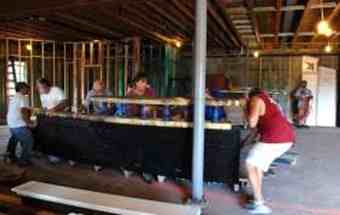 Pirates first captured Croce's interest when he saw the movie "Captain Blood," starring Errol Flynn, as a child, said museum spokeswoman Kari Cobham.
Pirates first captured Croce's interest when he saw the movie "Captain Blood," starring Errol Flynn, as a child, said museum spokeswoman Kari Cobham.
Featured collections will include authentic pirate artifacts dating back to 1563, the only surviving treasure chest in the world, one of only two Jolly Roger flags still in existence, Captain Kidd's original journal and some of Blackbeard's gold. Large exhibits will feature a recreated ship deck; Rogue's Tavern, a pirate hangout; and Port Royal, Jamaica, a 17th century lawless pirate stronghold.
An exhibit on Hollywood pirates is also included "to differentiate between what is real in the rest of the museum," Cobham said. It will include the sword of Jack Sparrow, played by Johnny Depp, from the "Pirates of the Caribbean" film.
"A lot of people think Jack Sparrow was real," Cobham said. "And he's not."
Halbirt said Croce's museum is in an appropriate place, because real pirates really did sack St. Augustine.
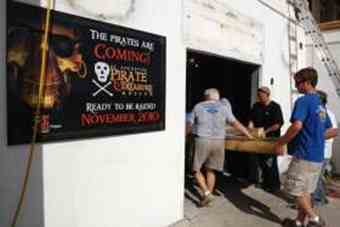 Drake came in 1586. Then, in 1668, English pirate Robert Searles captured a Spanish supply ship and a brigantine on its way to Florida. On other occasions, pirates tried to sack the city and failed. The continual threat of pirate invasions was one of the reasons the Castillo de San Marcos was constructed beginning in 1671, Halbirt said.
Drake came in 1586. Then, in 1668, English pirate Robert Searles captured a Spanish supply ship and a brigantine on its way to Florida. On other occasions, pirates tried to sack the city and failed. The continual threat of pirate invasions was one of the reasons the Castillo de San Marcos was constructed beginning in 1671, Halbirt said.
The invaders were called pirates by some, and privateers by others, depending on one's point of view, Halbirt said.
Privateers were sanctioned by the crown. Drake was considered a privateer by Queen Elizabeth I of England, who sanctioned his attacking Spanish ships; but his Spanish victims called him a pirate.
Pirates or privateers, "they were engaged in nefarious activities such as raiding towns," Halbirt said. "They terrorized people to extract certain things from them."
When they pulled up to a ship to raid it and raised their flag, "they created terror," he said. "It's a possibility" some of the artifacts discovered on the museum property are from people engaged in piracy, he said.
"The thing is that we know privateers in the 1700s unloaded their cargo in St. Augustine," he said. "They interacted with the people of St. Augustine."
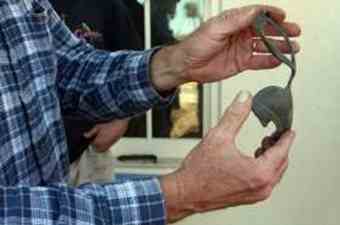 Some of the items came from Spanish and British soldiers, but a vast majority were used domestically and discarded as trash in "a general midden," Halbirt said, referring to piles of discarded items. He finds some of the artifacts interesting because during the 1600s and 1700s, the museum's area would have been an open field of fire next to the fort. During the 1800s, the castillo was losing its importance and people began moving in.
Some of the items came from Spanish and British soldiers, but a vast majority were used domestically and discarded as trash in "a general midden," Halbirt said, referring to piles of discarded items. He finds some of the artifacts interesting because during the 1600s and 1700s, the museum's area would have been an open field of fire next to the fort. During the 1800s, the castillo was losing its importance and people began moving in.
Some of the pieces of pottery found were from early Spanish periods, and some were from the 20-year period between 1763 and 1784, when the British controlled Florida. Other items were from the 1800s.
Halbirt said "the most significant" find was a sword hilt, the type an enlisted soldier would have used to hang his sword on his side. Those types of hilts were manufactured by the British beginning in 1751.
Most likely, it's from the British period, he said. It could have been worn by a Spanish soldier. Most likely not by a pirate.
It's first he's seen in his 20 years on the job.
"It's a cool object," he said. "It adds a romantic setting."
Author: Maggie FitzRoy | Source: The Florida Times Union [November 26, 2010]
VIA «Unearthed artifacts on show at new pirate museum in St. Augustine, Florida»